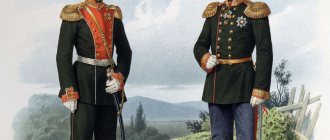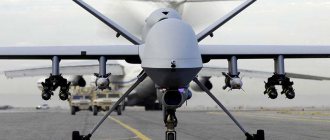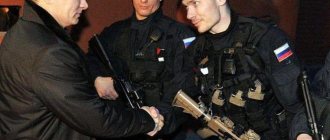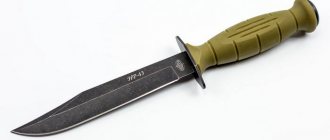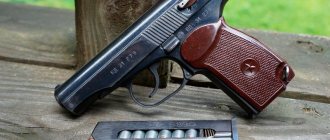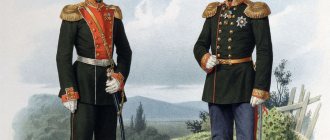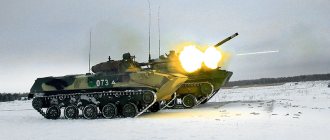6B13/6B13-1 (Varro series)
Acceptance for supply of aircraft : 1999 Manufacturer: NPF "Techinkom" (St. Petersburg). Design: The body armor consists of chest and back sections. On the shoulders, the sections are connected by belt-buckle fasteners, with the help of which adjustment is made according to height; on the sides there are Velcro, a belt with a hook and a carabiner. The basis of each section is a flexible fabric armored package, on top of which large pockets-covers for armored elements are sewn (one in the front section, two in the rear). The body armor is equipped with small shoulder pads and an adjustable collar to protect the neck and throat from shrapnel. Armor elements: ceramic-composite panels “Granit-4” produced by NPF “Tehinkom”. If necessary, Granit-4 armor panels can be used to equip 6B11-1 and 6B12-1 body armor. Level of protection: All-round protection according to class 4. It is possible to install special, more resistant armor panels produced by Tekhinkom. At the same time, protection class 6B13 increases to 5 or even 6a. Protection area: General anti-fragmentation - 45-55 sq.dm. (depending on size); front armor element - 7-9 sq.dm. (depending on size); rear armor elements - 7.5-8.5 sq.dm. (depending on size). Weight: 11 kg. Modifications: The 6B13M body armor produced by NPF Tekhinkom has straps sewn on top of the cover, allowing for attaching pouches of the UMTBS and MOLLE unloading systems. Notes: 6B13 is an assault vest and is designed to protect personnel of combat units of the ground forces, airborne forces, ground forces, and marines performing short-term special operations from bullets and shrapnel.
The 6B13 body armor vest has been accepted for supply to replace the 6B5-13, 6B5-14 and 6B5-15 body armor vests. Under the same index “6B13”, bulletproof vests were produced in small batches by CJSC “Kirasa” (Perm) and TsVM “Armokom” (Moscow). In the 1980-90s, the main body armor of the US Army was the soft anti-fragmentation PASGT-V. In the hot spots of the planet, where the Yankees ran into particularly active resistance, their elite assault units received (I note right away: in very limited quantities) RBA body armor, the armor elements of which could already hold a bullet from a long-barreled weapon. However, military campaigns in Yugoslavia, Africa, and the Middle East demonstrated that such division has completely outlived its usefulness. Units that did not receive RBA vests increasingly came under long-barreled fire and, as a result, suffered very significant losses.
It would seem that the way out of this situation suggested itself - transfer the entire army from PASGT-V to RBA and be done with it! But it was not there. It turned out that the “Ranger vest” was excessively heavy (as much as 11 kg), and besides, it had already become obsolete. It was then that the basic requirements for new armor protection were formulated. They are: high security, low weight, comfort, maximum freedom of movement when wearing. It was on these principles that a new protection kit was created in 1998, called the Interceptor Body Armor System (IBA), or translated as the Interceptor Body Armor Protection System against various threats.
The IBA kit includes: 1. OTV - basic body armor 2. SAPI or ESAPI - ceramic armor panels 3. DAPS - additional protection set of the 2004 model: DPS - shoulder pads; APS - protection of axillary areas 4. ESBI - set of additional side protection. Consists of two pockets with ceramic armor elements, which are suspended from the body armor using PALS slings
How to choose a bulletproof vest
Manufacturers offer models of different formats. Which body armor should you choose for a private person to wear, and which ones are more suitable for special forces? You need to select an accessory taking into account the planned wearing option and the level of protection. It is worth paying attention to the material from which the armor elements are made, assessing the level of comfort and checking the certificate of conformity.
Wearing options
Private individuals and secret police officers must conceal the presence of personal protective equipment. In this case, the vest should be located under clothing. For everything to look natural, it is necessary that the product has a small thickness, is elastic, and emphasizes the natural contours of the body. This is taken into account when creating models for concealed carry. The disadvantage of the thin armor is that it can only withstand a pistol shot or a knife blow.
For intelligence officers, military personnel, and cash collectors, the vest is part of the uniform. Increased demands are placed on the product, so the thickness of the plates and the coverage area have been increased. To ensure mobility, such protection is worn over the main clothing. External models are heavier, but can withstand bullets from automatic weapons, sniper rifles, and light machine guns.
Protection level
Determined by the armor’s ability to withstand dynamic external influences. There is a classification that contains 10 classes from 1 to 6, including “Special”, 2A, 5A and 6A. The lightest is made from fabrics, it corresponds to class 1 and can withstand the blow of a knife, a Nagant or PM bullet. Products marked 6a are capable of preventing damage when hit by a 7.62 mm armor-piercing bullet fired from a Dragunov sniper rifle.
Material
When creating, different materials are used. The most commonly used are aramid fabrics, steel, titanium alloys, ceramic plates based on aluminum oxide or silicon carbide, and polyurethane. The materials are distinguished by their strength, impact resistance and weight. Fabric materials protect well from splinters. Steel plates attract with good characteristics and low price. For this reason, they are used in mass production.
Convenience
Factories rarely offer vests designed for different body types. Traditionally, they produce 2-3 options, so you need to choose a model that is easily customizable taking into account your height, chest width and waist size. The vest should fit tightly to the figure. When wearing for a long time, you need to take care of the presence of a ventilation system and T-shirts that absorb excess moisture.
Certificate of conformity
Confirmation of reliability is the Certificate of Conformity. To obtain it, products are tested according to approved protocols. Certification activities are carried out in accordance with GOST requirements in the most stringent regimes. This allows the buyer to be assured that the declared characteristics are reliable and can ensure safety.
OTV (Outer Tactical Vest)
Accepted for aircraft supply: 1999 Manufacturer: Point Blank Body Armor, Inc. Design: The OTV body armor consists of 3 sections (one dorsal and two chest), connected to each other in the areas of the shoulders and sides. Like the vast majority of earlier American safety vests, the OTV takes the form of a sleeveless jacket that fastens at the front. When fastened, its two front sections overlap one another and are locked with a flap with 3 buttons and Velcro. In the back and front-right sections there are pockets for armor panels. The OTV bulletproof vest has a collar to protect the neck, removable throat protection, a removable groin apron, and a handle on the back for evacuation in case of injury. The entire outer surface of the case is reinforced with sewn PALS nylon webbing (horizontal strips 2.54 cm thick), designed for attaching additional protection, pouches and other items of equipment. The vest is adjustable in width with side drawstrings. Along with Kevlar, the OTV body armor uses a new ballistic fabric material, Twaron, which reduces the weight of the product by 18% compared to PASGT-V. Armor elements: aramid armor panels SBI (Soft Ballistic Insert). To enhance protection, boron carbide armor plates SAPI (Small Arms Protective Insert) are used. In 2005, ESAPI (Enhanced Small Arms Protective Insert) armor plates, which have a higher level of protection and survivability, were accepted for supply. Protection level: basic body armor OTV - protection class IIIA according to NIJ (protection from fragments and bullets 9x19 mm.) SAPI armor panels - protection class III according to NIJ armor panels ESAPI - protection class IV according to NIJ Weight: 3.8 kg - medium size with two SBIs . 7.4 kg - medium size with two SAPIs 8.8 kg - medium size with two ESAPIs 15 kg - medium size with two ESAPIs and all additional protection modules Modifications: OTV-extra. This model is complemented by new protection elements for the shoulders, torso and lower extremities. Notes: Until the mid-2000s, OTV body armor was considered the most effective means of personal body armor in the US Army.
That is why it was purchased in large quantities and supplied to all combat units stationed in Afghanistan and Iraq. Between April and June 2014, the United States transferred approximately 2,000 protective kits to IBA for the needs of the Ukrainian Armed Forces. While the Americans were puzzling over how to improve the quality of their IBA protection, the Russians had to solve problems of a completely different kind. They urgently needed to sort out the mess that the GRAU, wittingly or unwittingly, had created in supplying troops with personal armor protection (PIB). At that time, some units of the Russian army did not have body armor at all, while in others there was a real mess and confusion. Both the old Soviet models 6B4 and 6B5 and the freshly baked 6B11, 6B12 and 6B13, the number of modifications of which from different manufacturers went off scale, were simultaneously supplied. Outright palenka was also common among the troops, the most striking example of which was the “famous” body armor from JSC Artess.
An attempt to put an end to all this chaos was the adoption of a new unified body armor 6B23, which was supposed to replace almost all previous models in all branches of the military. The new body armor was not a revolutionary development at all. In terms of the level and area of protection, it remained at the level of its predecessors from the “Visor” series. However, there was one property for which it was really worth thanking the developers from NPP KLASS. The 6B23 bulletproof vest turned out to be quite comfortable, fit perfectly to the figure and did not hang on the soldier like some kind of awkward robe. In addition, 6B23 also pleased officials from the Ministry of Defense, since its purchase price was lower than that of most previous models.
6B23 (Varlo series)
Acceptance for supply of aircraft: 2004 Manufacturer: NPP "KLASS" (Moscow) Design: The 6B23 body armor consists of chest and back sections, interconnected in the shoulder area using a detachable adjustment device. 6B23 is put on over the head. It is fastened at the waist with wide fabric belts with large Velcro. Small fabric armor elements are placed in the side parts of these belts to protect the sides. On the stomach, the belt fastening area is covered with a large folding flap. The camouflage cover is made of synthetic fabric. As in body armor 6B11, 6B12, 6B13, the internal surface of both sections facing the body is covered with vertical polyethylene foam rollers, which form protective dampers. This design of dampers allows both to reduce the armor (concussion) impact and to ventilate the under-vest space. Inside the outer camouflage covers there are internal protective covers (front and back) made of 30 layers of TSVM-2 fabric. It is inside these cases that the armor elements are attached. The front section contains two overlapping armor elements, and the rear section contains one. In the early series of 6B23 body armor, one large armor plate was placed in the front section, but later it was divided into two parts to improve ergonomics. The 6B23 body armor is also equipped with a high adjustable collar to protect the neck and throat from shrapnel. In the latest series of body armor, straps were sewn onto the outer camouflage covers for attaching pouches and other attachments. Armor elements: fabric art. 11938. To enhance protection, either steel armor elements with a thickness of 6.3 mm are used, or a combination of steel and ceramic. Protection level: general – class 1, V50 – 540 m/s; fabric armor elements - class 2; steel armor elements - class 3; ceramic armor element – class 4. Protection area: total – 48 sq.dm; front armor elements - 8 sq. dm; rear armor element – 8 sq.dm; side armor elements (2 pcs.) – 4.6 sq.dm. Weight: 4 kg – with fabric armor elements; 7.9 kg – with front steel, rear fabric; 7.2 kg – with front upper ceramic, front lower steel, rear fabric; 10.2 kg - with front upper ceramic, front lower steel, rear steel. Modifications: 6B23 – fabric armor elements in the front and rear sections; 6B23-1 – steel armor elements in the front section, fabric in the rear; 6B23-2 – in the front section: the upper armor element is ceramic, the lower one is steel; in the back - fabric or steel. Notes: Currently, the 6B23 body armor is the main body armor of the Russian army, however, the Russian Ministry of Defense has stopped purchasing it in favor of the more modern 6B43.
However, NPP "KLASS" continues to produce modernized 6B23 body armor under the names "Korund-VM" (protection class Br4) and "Korund-VM-K" (protection class Br5). The IBA armor protection kit, which has been supplied to the US Army since 1999, has been combat tested in many hot spots on the planet, saved the lives of thousands of American soldiers, and has shown both its pros and cons. The undoubted merit of the IBA kit was confirmation of the correctness of the principles followed by its developers. Let me remind you of this: convenience, modularity, weight reduction and increased protection due to the use of new materials. The disadvantages of the design included poor protection of the lateral and axillary zones (where snipers most often worked), as well as far from perfect ergonomics.
Taking into account all of the above, the command of the US Armed Forces decided to create a new, more advanced body armor. In the spring of 2006, the basic requirements of the PEO Soldier program were published, which companies wishing to participate in the development of prototypes had to adhere to. About two dozen developers took part in the competition, and the result was not one model, but two. This is how IOTV was born - now the main body armor of the US Army and MTV - the standard body armor of the US Marine Corps (MCC).
In the design of both body armor, the creators were forced to abandon the traditional American design - a jacket-type vest with a front clasp. The new American body armor IOTV and MTV, like the vast majority of world models, began to look like a poncho that fits over the head.
Comparative review of Russian combined arms body armor 6b23 and 6b45
Photo from open sources
The conditions of modern combined arms combat dictate strict requirements for the quality of individual armor protection used by the parties to minimize the damage caused to manpower.
The main factors of destruction on the battlefield are small arms bullets and fragments of both the used ammunition of various types of weapons and elements of the terrain and structures. It was the desire to create a universal body armor for participants in combined arms combat that motivated the designers of both models under consideration. As many people know, the desire for versatility does not always lead to positive results, but in the case of our body armor, we cannot divide everything into good and bad; let’s try to understand their disadvantages and advantages. First, let's start with the performance characteristics of 6b23:
The vest has three modifications, which are determined primarily by the protection class. 6b23 is available in three sizes depending on build and height. The vest itself structurally consists of two sections (chest and back) with an area of 8 square meters. dm. each. The sections themselves have an external cover made of fire-resistant fabric on the outside, and the internal material is wear-resistant nylon, the external colors of the covers are VSR-98 “Flora” and “EMR-Summer”. The covers are non-removable; inside they have protective screens made of 30 layers of TSVM-2 aramid fabric. Armor panels can be placed inside the screens. In addition, there is a special shock absorption and ventilation system on the inside of the chest and back sections. The collar, shoulder pads and side parts are made from the same TSVM-2. Additional armor plates or protective screens can also be placed inside the side parts (remember this point).
Thus, we have a basic vest model that provides class 2 protection (let’s agree right away, for simplicity we will use the European DIN standard), i.e. from non-armor-piercing pistol bullets and small fragments. This model, using a standard 6.5 mm thick steel armor plate placed in the chest section, can be upgraded to version 6b23-1, resulting in chest protection of class 3, i.e. from non-armor-piercing bullets from a machine gun or assault rifle. The back in the standard version 6b23-1 remains with class 2 protection.
The next 4th protection class 6b23-2 is achieved by using the standard Granit-4M ceramic armor panel placed in the chest section pocket. Thus, protection of the thoracic projection according to the fourth class is achieved, i.e. the body armor is capable of withstanding armor-piercing ammunition fired from a machine gun or assault rifle, as well as an armor-piercing bullet fired from an SVD rifle from a distance of 100 m. Moreover, the back section of the 6b23-2 is reinforced with a Kevlar protective screen. Additionally, it is possible to enhance back protection with a standard steel armor plate, which provides class 3 protection.
As you can see, the body armor provides a fairly serious level of protection, and depending on the task and the presence of damaging factors, we can vary the level of protection and, accordingly, the weight of the product from 4 kg in the version without armor plates, to 8 kg and 7 kg in versions with steel and ceramic panels respectively. That is, the very modularity of the product.
Let's turn to 6b45. But let’s start with the fact that, in our opinion, the 6b45 is still an improved model of the more complex and heavier version of the 6b43, which also has a higher protection class, and, which is important in the final choice when adopted for service, a higher price. 6b45 is a standard element of the Ratnik equipment. Like the previous option under consideration, this body armor has a dimensional grid designed for three sizes. The maximum armor protection area is the same - 7-8 dm. sq. for each section. At the same time, there is a reinforced one - “assault equipment”, we will talk about it a little later.
The Russian Ministry of Defense sent two S-400 divisions to exercises in Belarus
As for the levels of armor protection of the main model: despite the declared 3rd class, I would like to draw your attention to the fact that the basic configuration includes a product with an already installed ceramic armor plate of the 3rd class (“Granit-5”, according to GOST – protection class 5A). Thus, we obtain armor of the 3rd protection class, the standard configuration includes 2 armor plates. The additional assault kit includes shoulder pads that provide anti-fragmentation protection, a set of ceramic armor plates with the 4th protection class (according to GOST - 6-6a) for the chest and back, sides, and lower tier of the front and rear parts of the body armor. In this case, the weight of the product can be determined in this way: in the full basic configuration, on average, about 9 kg. The weight of the assault kit is more than 15 kg, again depending on what you stuff into the vest. An additional kit also includes a buoyancy support system for overcoming water obstacles.
As you can see, 6b45 also provides a high class of armor protection.
Now let's compare a little. Among the obvious advantages: the presence of a “molle” type fastening on 6b45 immediately catches your eye. This thing is quite convenient and practical; it provides the fighter with the opportunity to conveniently place on himself a BC, a first aid kit and many other necessary things. Although, in my opinion, a standard “molle” adds convenience only to regular motorized rifles, but that’s a completely different story. In the upper part of the rear section there is a special loop for easy evacuation of the wounded owner of the bulletproof vest. Its practicality can be debated for a long time, but some people whispered thanks to the developers for its presence. More pronounced shoulder profiles than on 6b23 for comfortable resting of the butt against the shoulder and preventing it from slipping during shooting and aiming. Again, not everyone praises them; some criticize them, calling them useless and annoying. The situation is the same with 6b23. Armor panels can be inserted into the side sections of both vests, thus significantly enhancing the side armor protection, but the problem is that the entire additional set of supplies for 6b45 is a rather rare thing and is not supplied to all units, and it is almost impossible to find on the private market unreal. This actually poses a problem, significantly reducing the lateral protection of the vest wearer. As a positive point, we can highlight the comfortable 6b45 collar. When used correctly, it does not interfere with turning your head and ensures comfortable wearing of the vest. The 6b23 collar also does not interfere with head turns, but it is more difficult to cope with. And one more important point: unlike 6b23, its “descendant” has a quick reset system. Such a system is capable of saving the life of a soldier who has fallen into deep water while overcoming a water obstacle or while making a crossing over it. 6b45 has removable ballistic caps. The shock absorbers are fixed with Velcro. Groin skirt 6b45 is removable, unlike 6b23. Now about the minuses: both body armor have non-removable covers with reinforced fabric packages located inside. This means that when wet and washed, the fabric will lose its protective properties. Many people recommend immediately ripping open the cover, removing the packages and insulating them by wrapping them in polyethylene or reinforced tape. Another point: standard Fastex fasteners 6b45. They must be replaced, as they are made of the cheapest and lowest quality plastic.
The area of anti-fragmentation protection 6b45 in the usual configuration is much lower than 6b23, this is noted by all users who took part in hostilities. Moreover, often - as the main disadvantage of 6b45.
In general, everyone who has experience with 6b45 and earlier models of body armor (with the exception of 6b43) notes its close compliance with modern standards of armor protection and ease of wearing. However, the body armor itself remains controversial.
In the end, I would like to briefly compare the 6b45 with a very similar model for the Russian FSB special forces units - Fort Defender-2. Like the options we have considered, the body armor has a modular configuration principle to increase the level of armor protection. The protection classes are identical; the Defender has the ability to install standard ceramic armor plates. The weight of the vest in its complete basic configuration is 9 kg. But let's talk about the advantageous, in my opinion, differences implemented in the Defender.
Elite British Rangers arrived in Ukraine on orders from London
First of all, the equipment. The body armor covers are removable and have two standard color options: “olive” and black. There are delivery options in multicam. The area of the Defender's basic anti-splinter armor is much larger. But there is no way to place armor plates in the side segments of the product, although the segments themselves are much higher, which increases the owner’s anti-fragmentation protection. The standard version of full protection assumes that the vest has two armor plates “top” and “bottom” in each of the “front” and “rear” sections; additional armored screens made of reinforced fabric are removable.
One seemingly insignificant point: on later models, the Molle tapes on the front segment of the vest are sewn at an angle, which makes it very easy to work with the contents of the pouches attached to the chest. The anti-fragmentation collar of the vest is made of two separate segments (front and back) and the crotch skirt is completely removable. The vest does not have high-profile sidewalls in the shoulder area, which makes it easier to quickly remove the weapon belt and prevents the possibility of getting caught on the edges of narrow spaces in the hatch of an armored vehicle or when climbing through some cluttered openings. Shock absorbers are removable. All main fasteners are Velcro, which allows a fighter to work comfortably in a vest with gloves and eliminates the need to look for a replacement for a fastex that breaks at the most inopportune moment. The only negative in my opinion is the lack of a quick release system. There are configuration options in assault version, i.e. set complete with shoulder protection. In general, in my opinion, the vest is more versatile and comfortable in all respects. Some will say that it is too expensive for mass production and supply to regular units. But on the other hand, did this “someone” think about the cost of re-equipping the Army and development, testing, etc. all early models of universal military vests? Maybe it was not worth trying to invent something new for the “Warrior” kit?
Gleb Zima specially for Planet Today
Subscribe to us on VKontakte
IOTV (Improved Outer Tactical Vest)
Accepted for supply to aircraft: 2007 Manufacturers : Point Blank Armor (authors of the model), BAE Systems, Specialty Defense, KDH Defense Systems, Protective Product International Design: American IOTV body armor consists of chest and back sections, two side screens and an internal elastic belt . Additional components include: groin protection, lumbar protection, splinter collar, throat armor, shoulder pads. The body armor is equipped with a quick release system. In case of injury, falling into water or other emergency situations, you just need to pull the loop located in the slot of the bulletproof vest under the throat armor protection and the IOTV will instantly split into two parts and fall off your shoulders. PALS slings (for the first time they became camouflage) are sewn on top of the nylon cover of the body armor, allowing you to attach attachments around the perimeter 360º. The lining of the new vest is made of mesh, which improves air circulation in the vestibule space. Compared to OTV, the IOTV body armor provides better protection and higher comfort, achieved by more efficient weight distribution (a special waist system transfers part of the weight of the body armor from the shoulders to the lower back). IOTV provides the same level of protection as OTV, but over a larger area, while the weight of IOTV has been reduced by almost 1.4 kg. The IOTV vest has a higher cutout in the armpit area, eliminating the need for APS armpit protectors. The American IOTV body armor can be worn either over the head or by unfastening the left shoulder strap. Armor elements: The IOTV body armor is equipped with 4 standard ceramic armor panels: ESAPI – 2 pcs. (thoracic and dorsal), ESBI/S-SAPI – 2 pcs. (lateral). It is also possible to install weaker SAPI armor panels. Protection level: basic body armor IOTV - protection class IIIA according to NIJ (protection against fragments and bullets 9x19 mm.) ESAPI armor panels - protection class IV according to NIJ (protection against armor-piercing bullets of 7.62x54 mm and 7.62x51 mm cartridges) Protection area: 83 ,19 sq.dm – all fabric armor elements in the full IOTV configuration for medium size; 21 sq.dm - general bulletproof class IV. Weight: 3.5 kg - medium size with fabric armor elements 13.6 kg - medium size fully equipped with ESAPI and ESBI/S-SAPI armor elements Modifications: IOTV Gen II - launched into production in 2009 Differences: outer cover and lining (instead of mesh) are made of fire-resistant nylon 500D Cordura; pockets for side ESBI have become removable; in the shoulder area there were slings with D-rings for attaching the TAP unloading system; PALS slings were removed from the lumbar protection, and the protection itself began to hang lower; the collar became shorter; The throat protection has become longer. IOTV Gen III – launched into production in 2012. The body armor has a fundamentally new quick release system and a new power circuit. Notes: The average price of an American IOTV body armor without bulletproof armor elements is $574.
The best concealed body armor
If you need to make the security of an object invisible, it is recommended to buy a concealed body armor vest. The peculiarity of these products is their high tightness, low weight, comfort during use, and easy maintenance. Personal protection is worn under clothing to conceal it from potential attackers. It resists well the impact of a knife and a bullet fired from a pistol.
Cuirass Universal SN Br2-1
Concealed carry model based on dyneem - modular polyethylene. Provides all-round protection of class 1 over the entire torso from Stechkin pistol bullets. The most vulnerable places have enhanced armor protection Br2, which reduces the lethality after a shot from a Serdyukov pistol. The use of modular polyethylene reduced the weight by 1.7 kg compared to similar products based on metal armored plates.
Ballistic fabrics with additional hydrophobic impregnation are used in production. This helps to maintain its shape when used in difficult climatic conditions - in the tropics, in heavy rain or when immersed in water. To create a high level of comfort, dampers are provided that provide ventilation.
Advantages:
- Light weight;
- Easy fit;
- Three standard sizes;
- It is possible to order the color of the ballistic fabric;
- Complies with GOST standards.
Flaws:
- Not detected.
The design uses flexible anti-traumatic panels. This provides good protection against concussion and injuries caused by hard, blunt objects.
Comfort 1M-1M Type UNI
Easily adapts to be worn with any outerwear - from a shirt to a jacket. This possibility is provided by the design features: the chest and back parts are connected by elastic bands. This allows you to adjust personal protective equipment to any figure. It is based on Russian-made armored fabric made from high-strength, elastic threads. This is a good body armor against a knife with high impact energy, a Stechkin, Nagant, Bison or Kashtan pistol.
Complies with class Br1, as standard it does not have metal elements, which allows you to freely pass through metal detectors at airports. There are possibilities for reinforcement up to Br2 using panels made of flexible molded plastic or aluminum armor panels.
Advantages:
- Good air circulation;
- Two covers of different colors included in the delivery set;
- Thermo-regulating T-shirts are paired with a vest;
- Universal size.
Flaws:
- Overcharge.
Torus-1
Made of aramid fabric, which makes it invisible to metal detectors. According to the current classification, it complies with Br1 standards. There is additional protection against a class C knife. One of the features is its light weight, which makes movement comfortable in extreme situations. The thin thickness allows it to be hidden under any clothing. Available in two sizes, which are effectively adjustable to fit your figure.
Consists of two elements that are connected with high quality Velcro. The total effective area depends on the size and is 33-40 sq.dm. The case is available in two colors – white and black. A carrying bag is included. A body armor made of Kevlar is capable of protecting against shots from PM, APS, and the Kedr submachine gun.
Advantages:
- Small thickness;
- Manufacturer's warranty 5 years;
- Quick setup;
- Tight fit;
- Availability of a certificate of conformity.
Flaws:
- Modest equipment.
The best air pistols
MTV (Modular Tactical Vest - modular tactical vest)
Accepted for supply to aircraft: 2006 Manufacturer : Protective Product International (PPI) Design: The American MTV body armor vest is close in design to the IOTV body armor vest. Like the IOTV, it consists of a chest and back section with pockets for armored elements, two side armor panels, an internal belt, equipped with groin protection, an armored collar and throat protection, the lining is made of mesh. Some personal features of MTV are as follows: - a specific quick release system allows you to disconnect only the side fastenings, the upper and shoulder fastenings can be separated manually; — the lumbar and sacrum protection is shaped like a front groin apron; it is integrated into the lower part of the back section and cannot be removed; — hidden channels for communication wiring (walkie-talkie headset wires, etc.) are laid inside the body armor; — MTV has an improved system for attaching the components of the body armor to each other; — the new arrangement of PALS slings allows for more convenient and efficient placement of equipment items; — MTV is equipped with a modernized armored collar with an improved anatomical shape. — the body armor has an improved system of heat removal, moisture removal and drying. Armor elements: The MTV body armor is equipped with 4 standard ceramic armor panels: ESAPI – 2 pcs. (thoracic and dorsal), ESBI/S-SAPI – 2 pcs. (lateral). It is also possible to install weaker SAPI armor panels. Protection level: basic body armor MTV - protection class IIIA according to NIJ (protection against fragments and bullets 9x19 mm.) ESAPI armor panels - protection class IV according to NIJ (protection against armor-piercing bullets of 7.62x54 mm and 7.62x51 mm cartridges) Protection area: 21 sq.dm - general bulletproof class IV. Weight: 4.31 kg - medium size without ceramic armor panels; 9.07 kg – medium size with two ESAPIs; 12.25 kg - medium size with two ESAPI and two ESBI/S-SAPI; 14.97 kg - medium size with two ESAPIs, two ESBI/S-SAPIs and hand protection; 16.78 kg - medium size with two ESAPIs, two ESBI/S-SAPIs and hand and foot protection. The MTV vest turned out to be the heaviest of the American body armor, which caused constant complaints from the Marines. It all ended with the fact that at the beginning of 2008, the command of the Marine Corps decided to suspend purchases of MTV until a new, more advanced model was put into operation. Notes: The very name of the American MTV bulletproof vest speaks of the main idea that is embedded in it - modularity. In other words, this is a large construction set from which you can assemble body armor of various configurations. The area and level of protection, weight, equipment, etc. change. for more effective execution of a particular combat mission. The American Marines have made modularity their feature, although such manipulations and transformations can be done with absolutely any body armor and for this it is not at all necessary to disassemble it into the smallest parts. It’s no different that the KMP is a sponsor!
IMTV (Improved Modular Tactical Vest - improved modular tactical vest)
Acceptance for supply to the Armed Forces : 2011 Manufacturer: KDH Defense Systems, Carter Enterprises LLC Design: The American IMTV body armor vest is a modification of the MTV body armor vest, in which the developers tried to take into account some of the claims and wishes of the Marines.
As a result, the changes affected only some minor design details that increase wearing comfort, the quality of fit to the figure (especially height), and make it easier to put on and take off. At the same time, the overall weight of the body armor decreased extremely insignificantly. As for the area and quality of IMTV protection, it remained at the MTV level. The Russian response to all this overseas abundance and diversity was the “Combined Arms Assault Vest with Improved Tactical and Technical Characteristics 6B43” (full official name). Almost five years after the Americans, bulletproof side protection was used in it. The 6B43 body armor turned out to be not as powerful and not as tightly built as the IOTV. But, as they say, every cloud has a silver lining; Russian body armor turned out to be much more comfortable when used in hot climates, which, by the way, is quite important. For example, it should be noted that during the fighting in the Middle East, the Yankees in some cases were forced to abandon the use of IOTV and MTV body armor, as they caused overheating of personnel.
Body armor rating
When compiling the review, special equipment from domestic and foreign brands was studied. Technical parameters, wearing comfort, freedom of movement, and availability of certificates were analyzed. User reviews and the opinions of intelligence officers were taken into account. The main attention was paid to the following parameters:
- Wearing options - they produce models of external and hidden types;
- Level of protection – class depends on the force that the vest can withstand;
- Material – metal, ceramics, multilayer synthetics, thermoplastic polymer;
- Convenience - depends on the design features and dimensions of the product;
- Weight – affects the level of comfort while wearing.
Lack of certificates, non-compliance with the declared class, the presence of large areas of vulnerable areas - products with such defects were excluded by experts from the rating.


